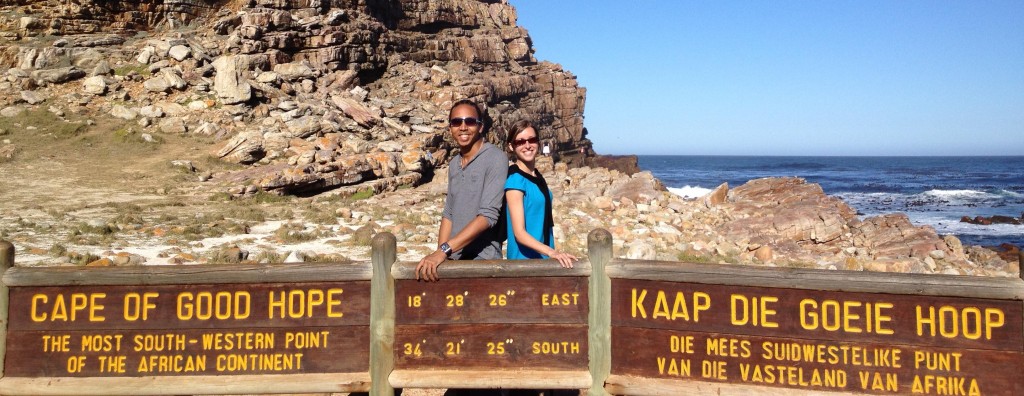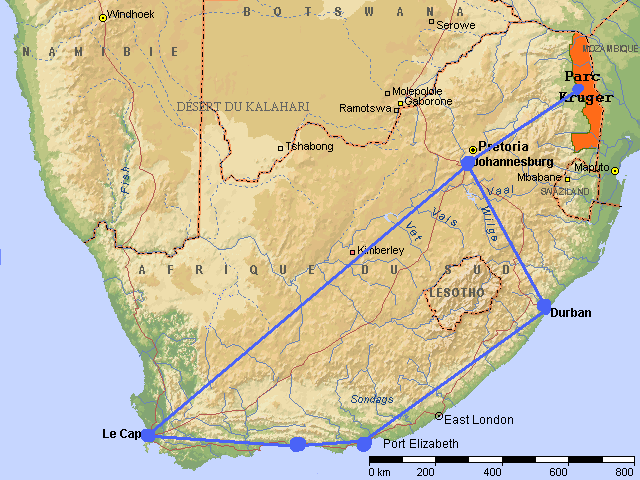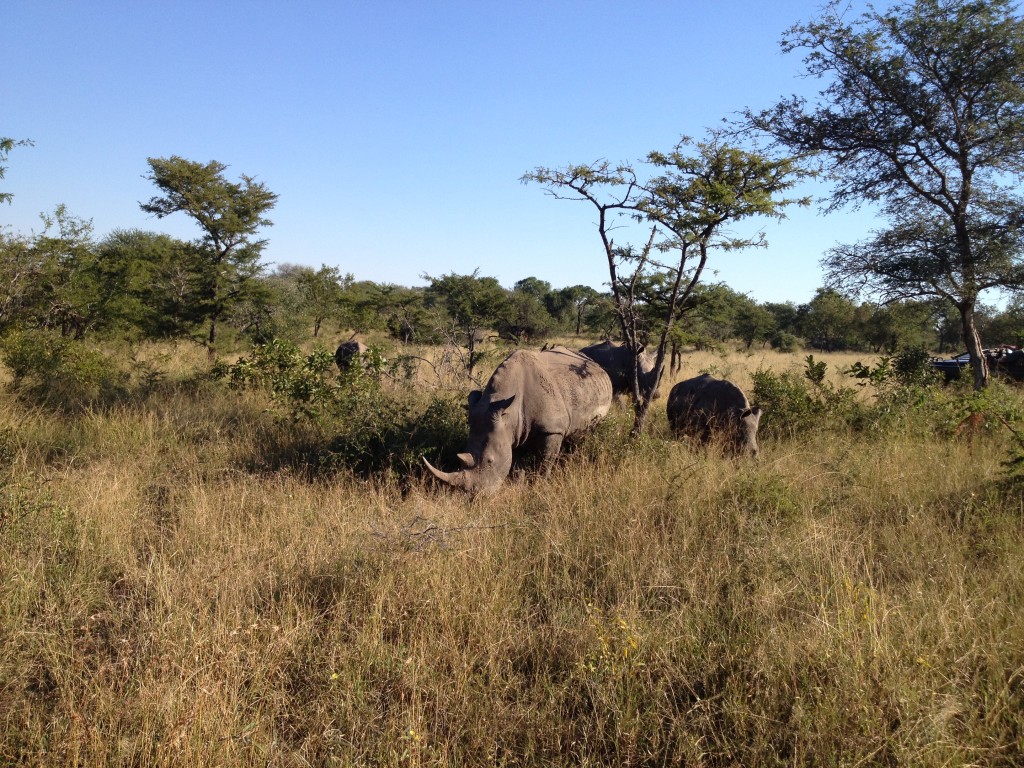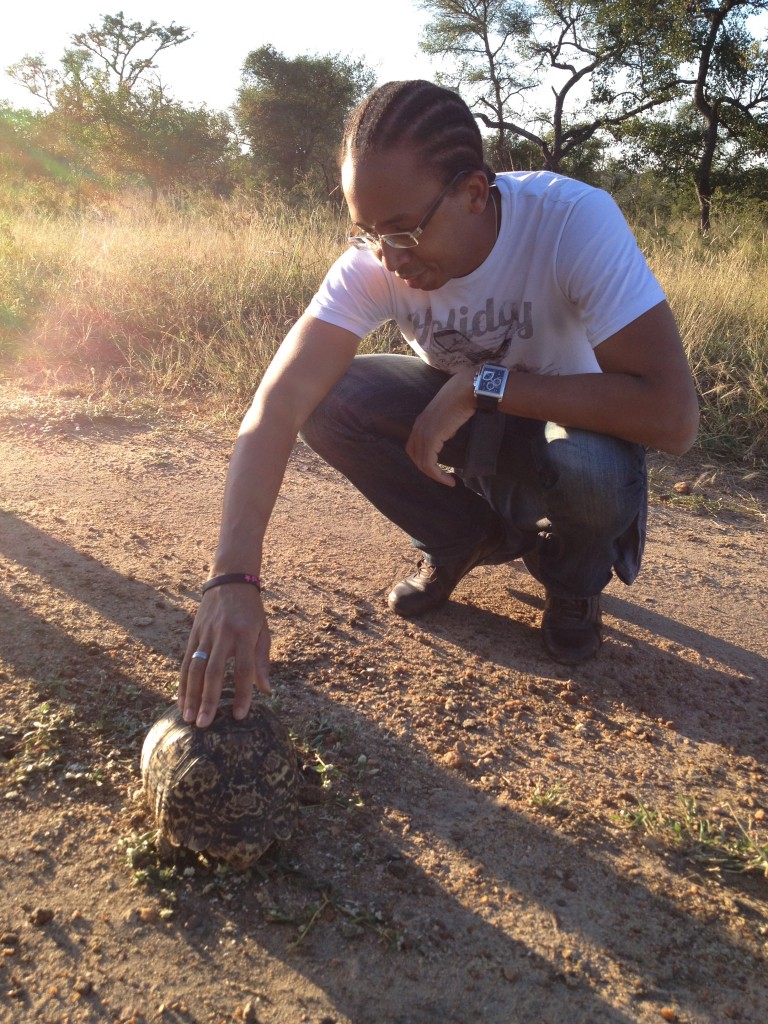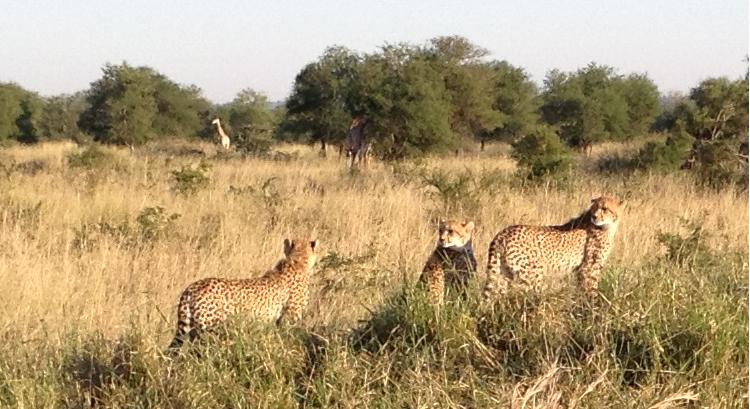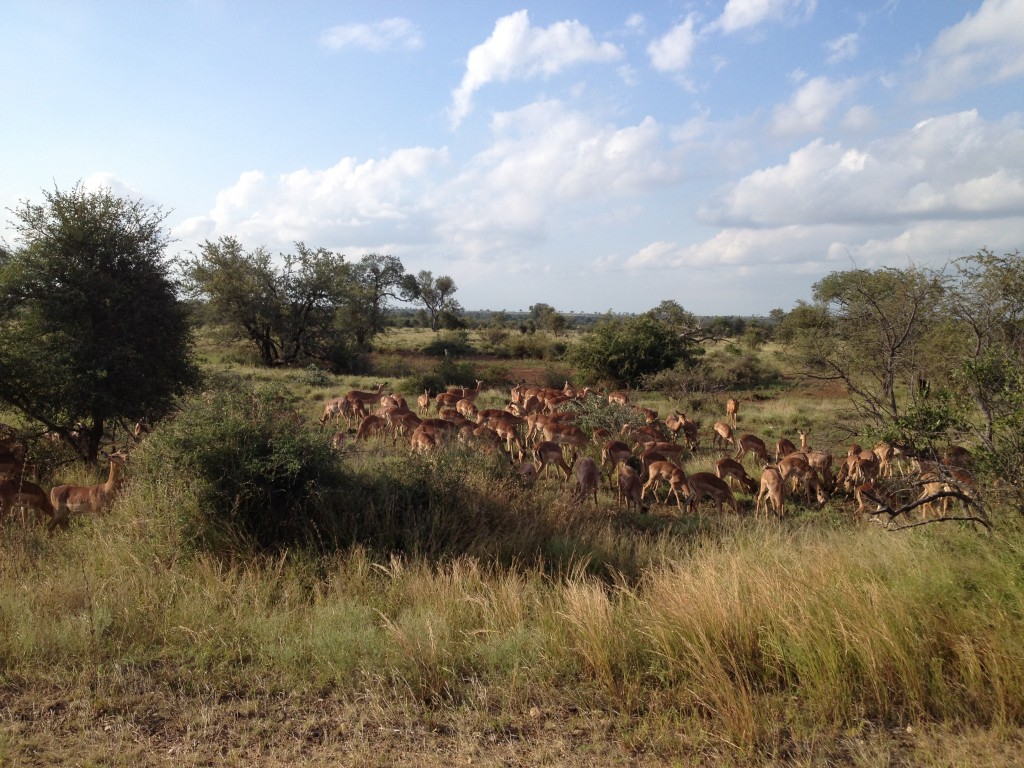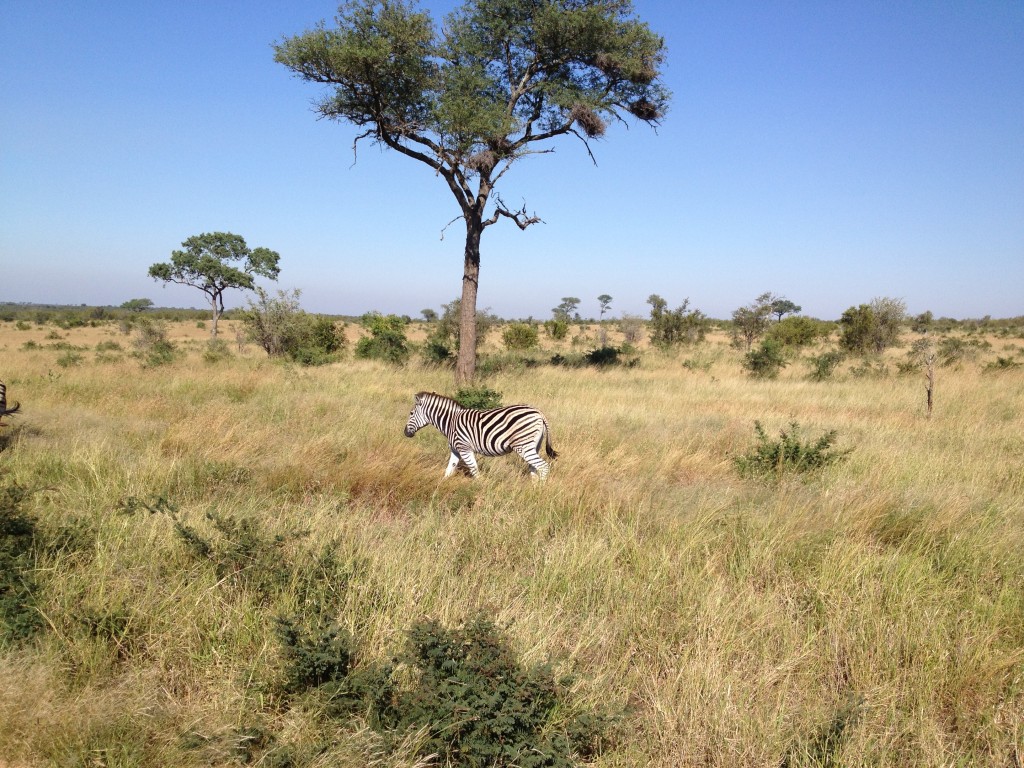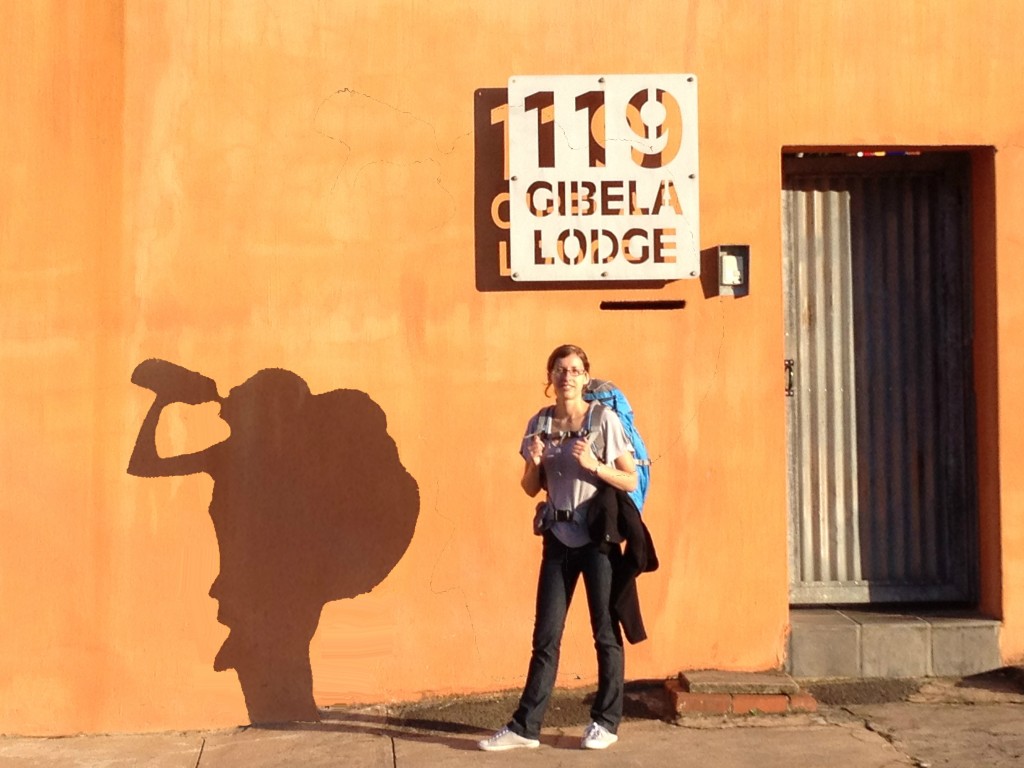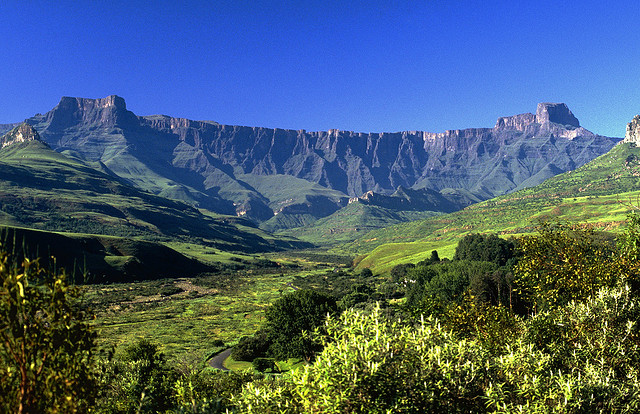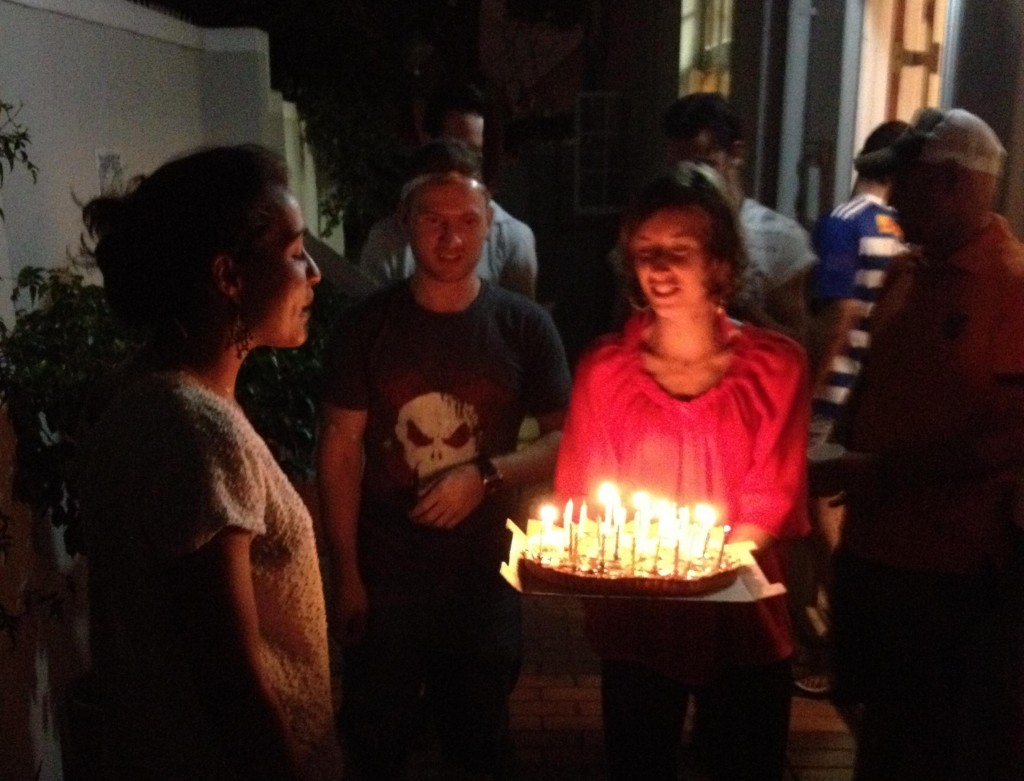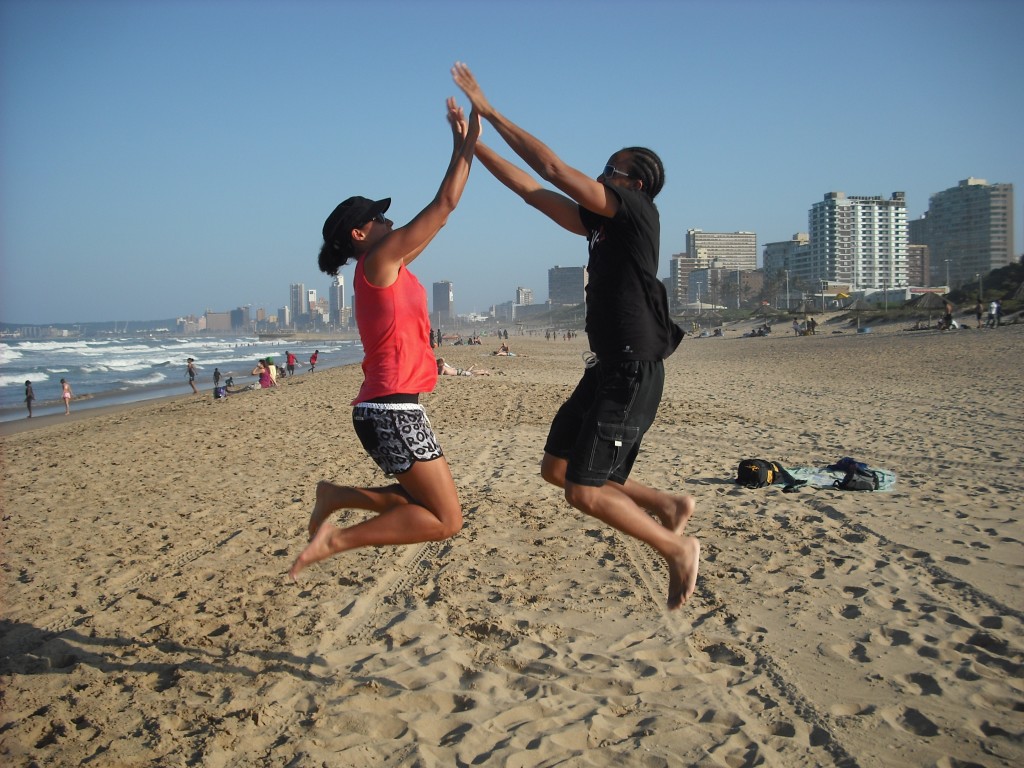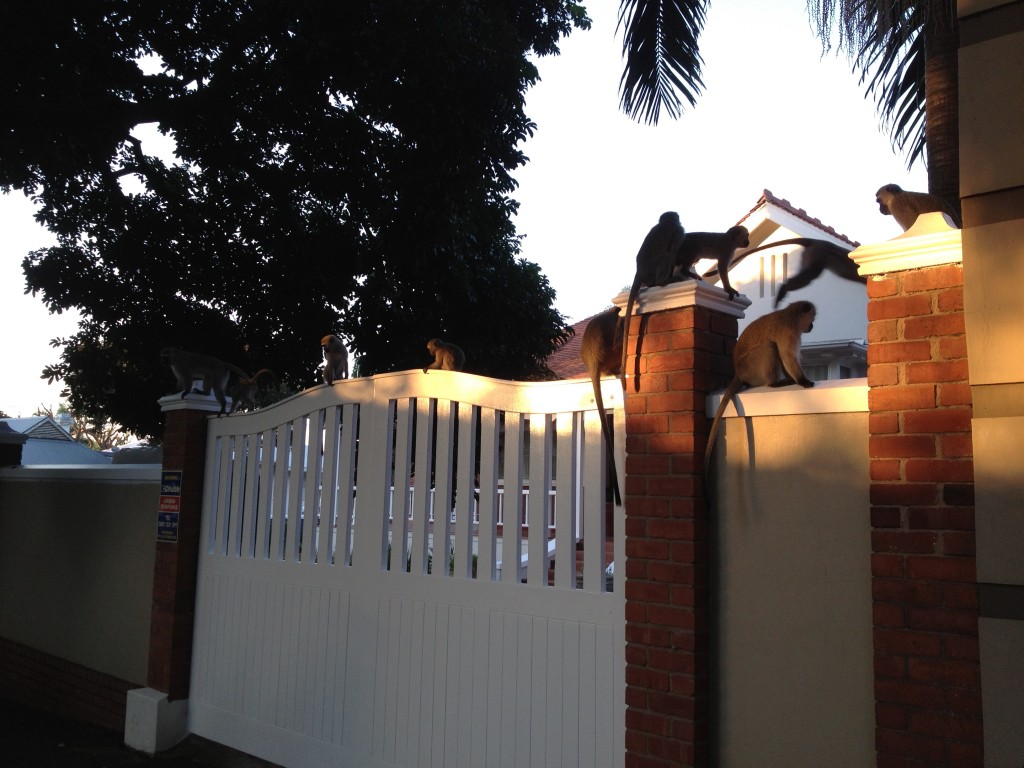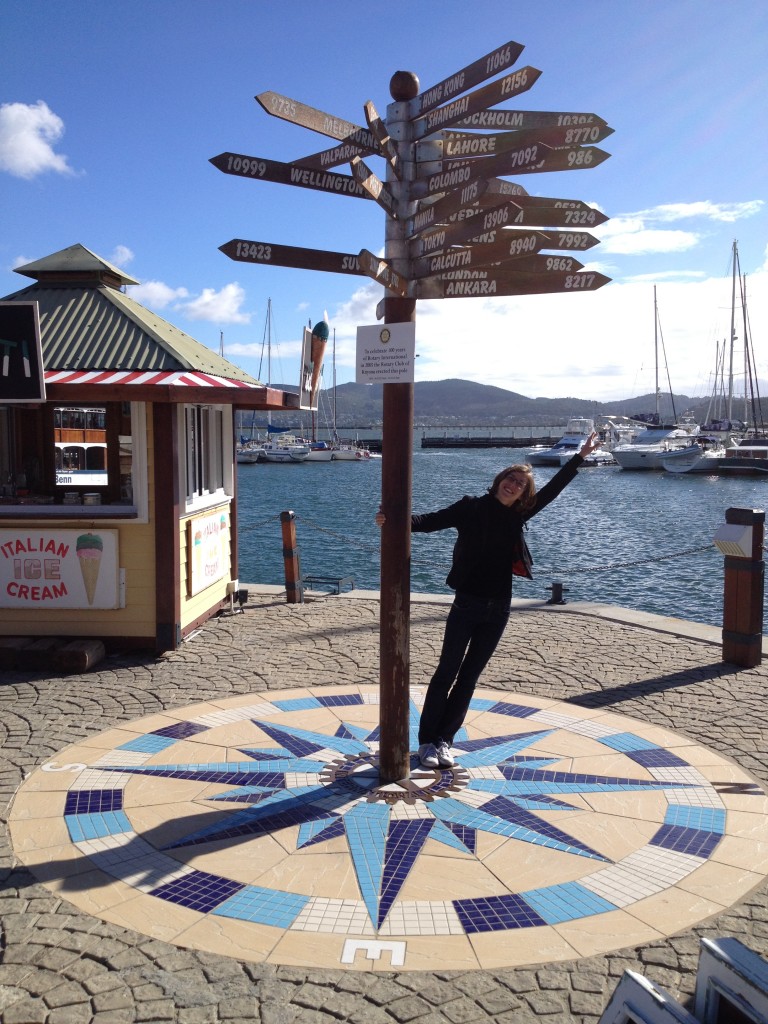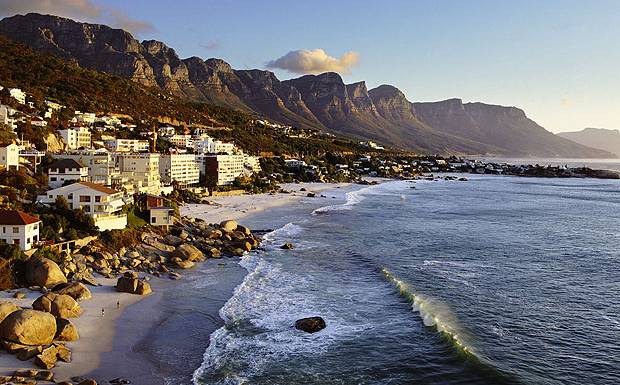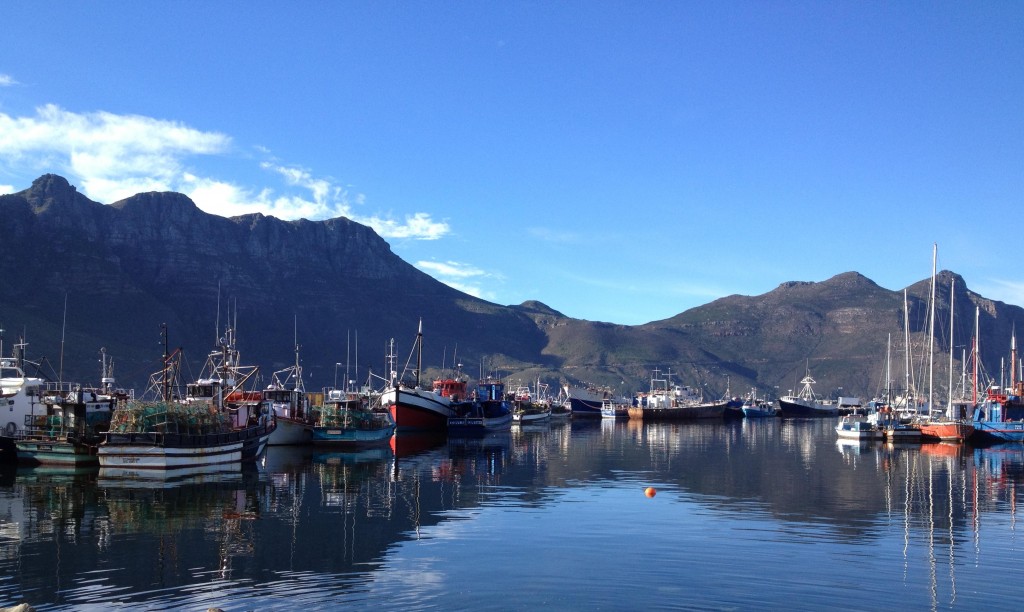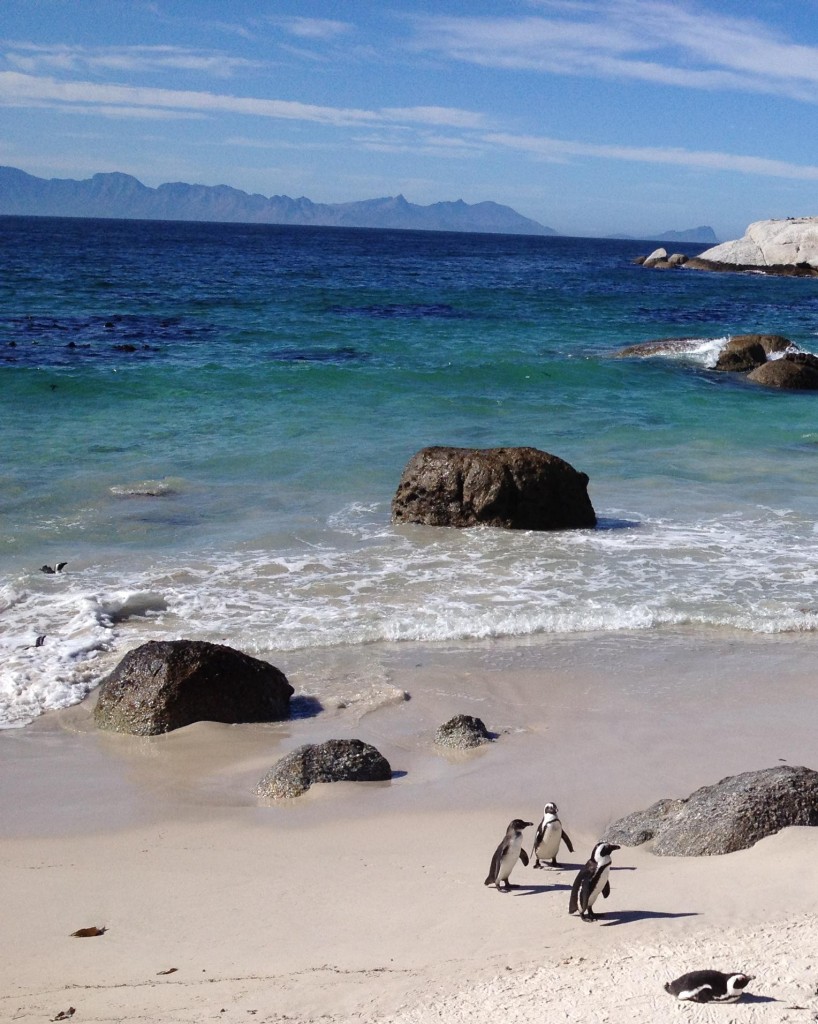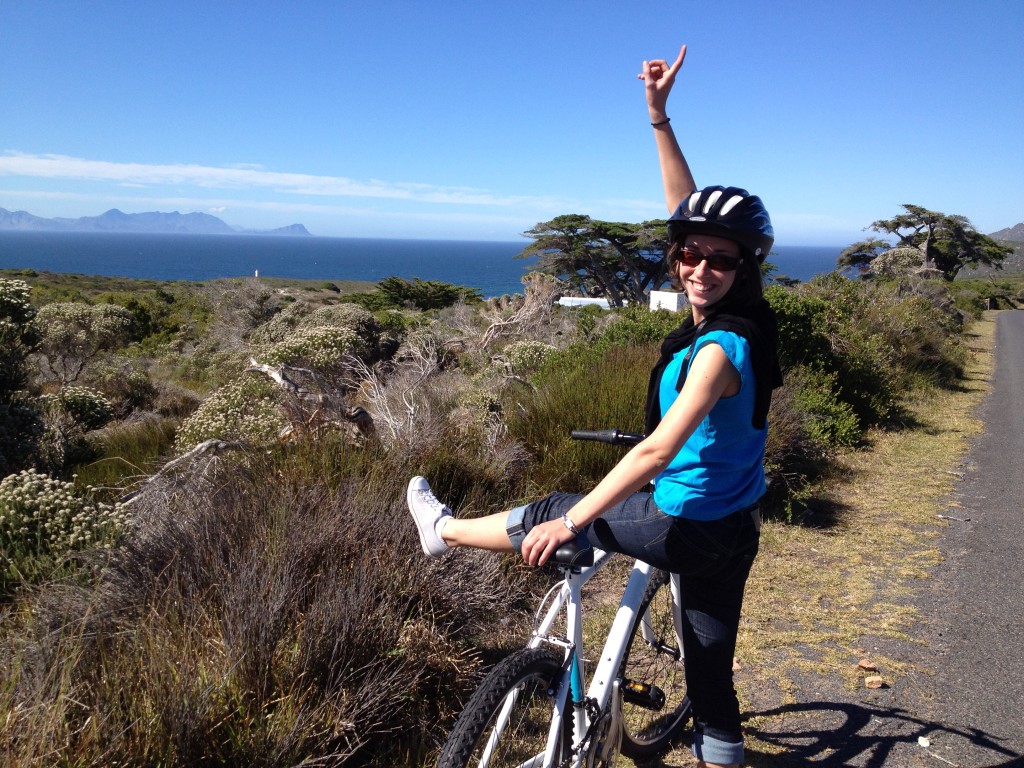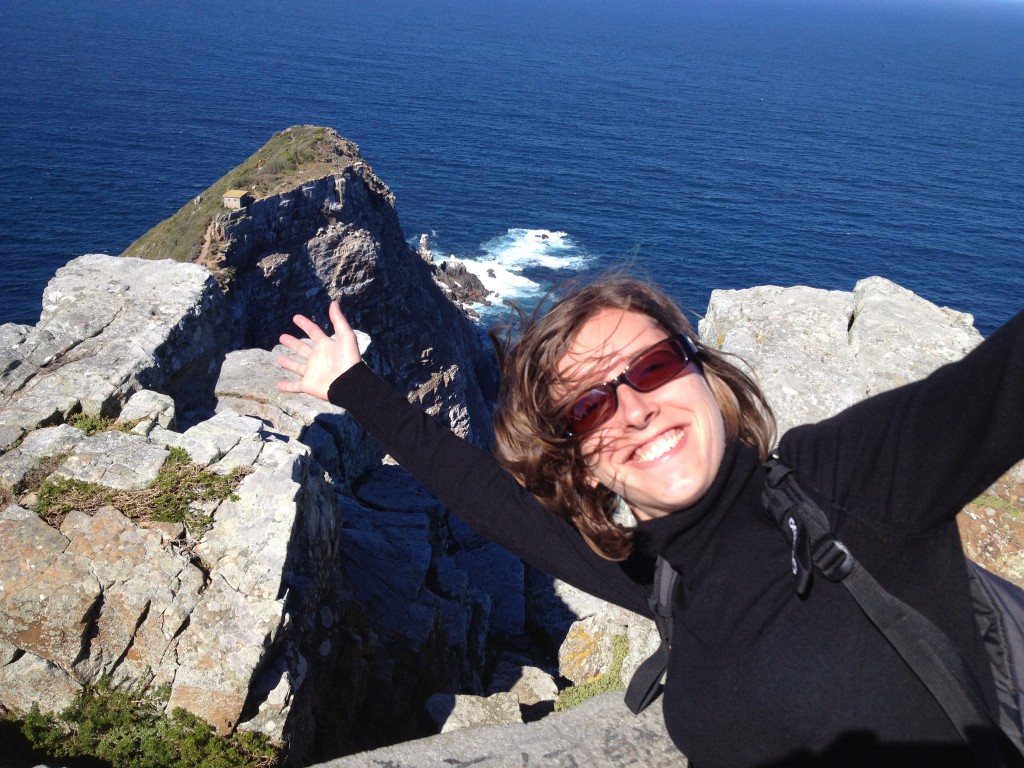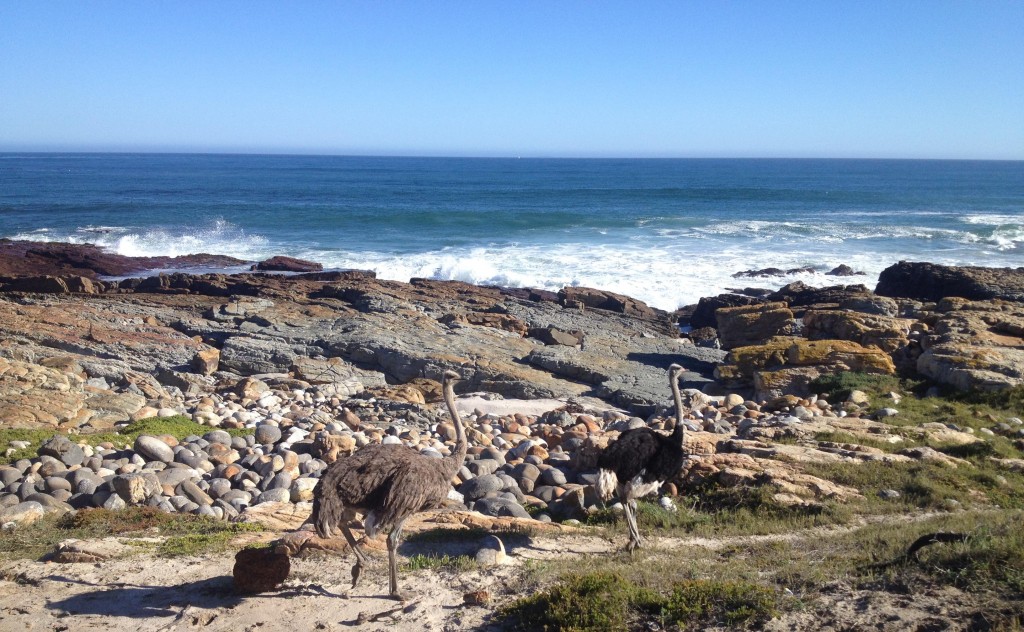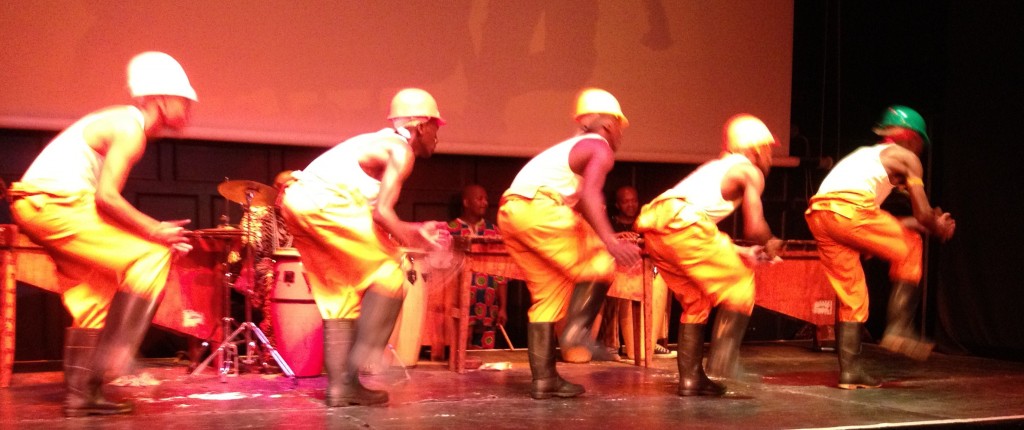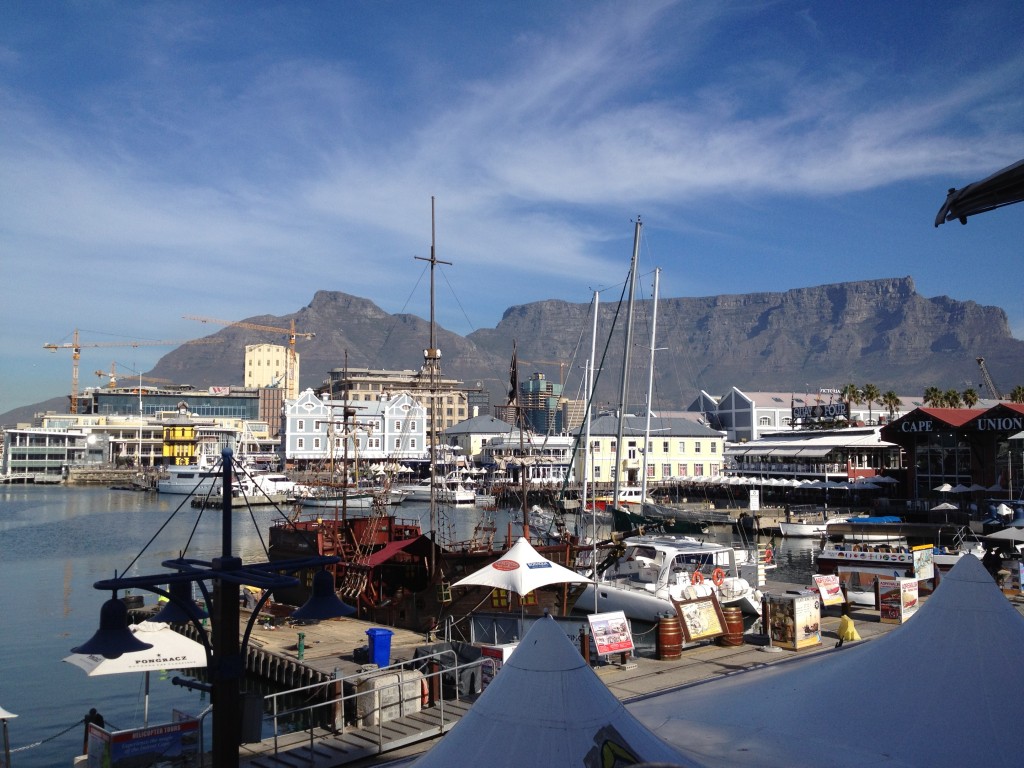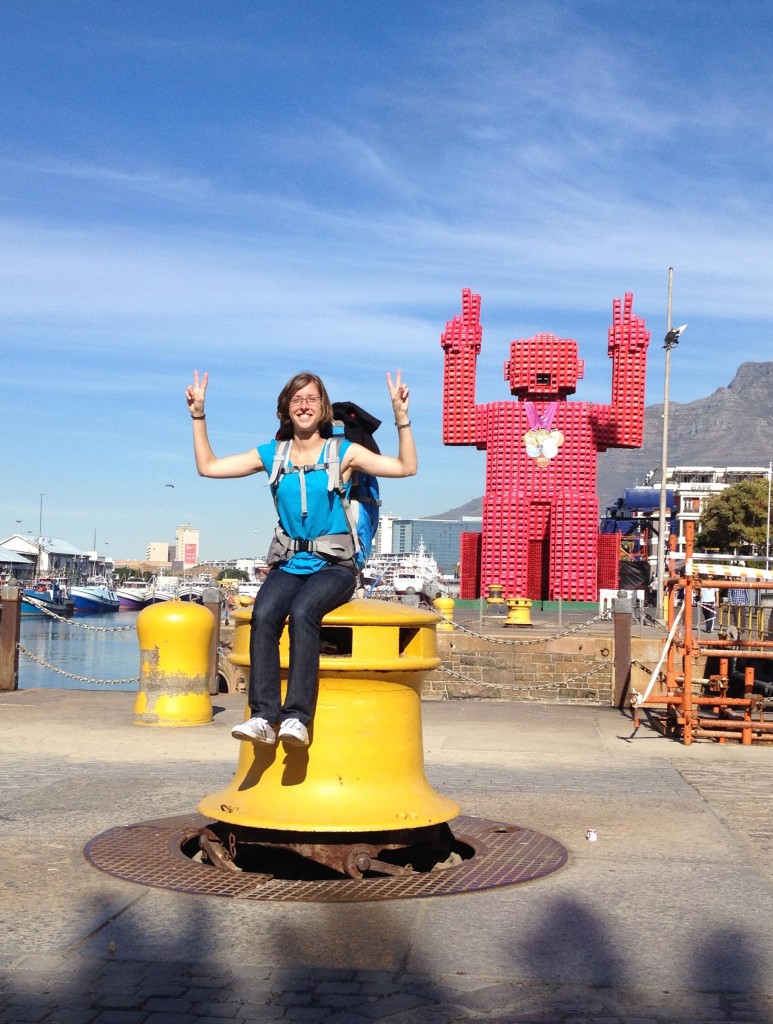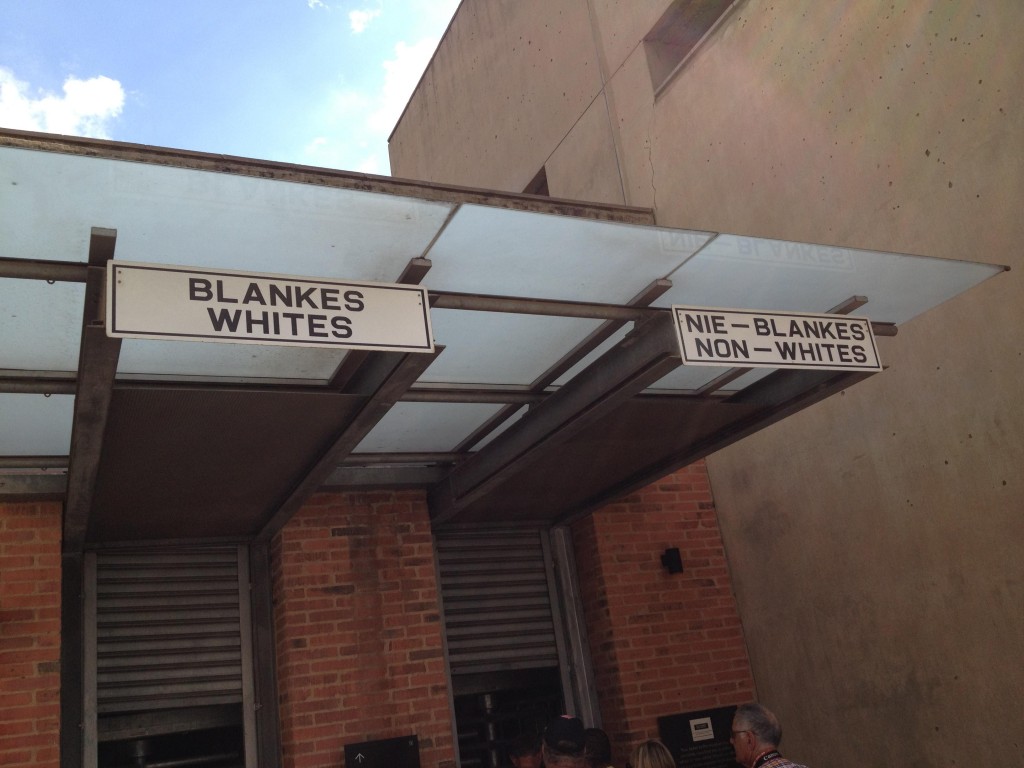At the end of the world!
For practical purposes, the English version of this blog is Google Translated. If there’s anything weird in the text, it’s probably either because of that, or you know, ’cause we are actually a little weird !
A loooooong trip
To get to our third destination on this trip around the world, we had to be especially patient. Leaving Buenos Aires, we flew to Sao Paolo in Brazil, then across the Atlantic Ocean to stop in Angola and finally left for Johannesburg. All this in two days. So a night and a day of sleep followed when we got there! Another consequence of this long journey, my calves and ankles were swollen to become as large as my thighs! It’s an odd feeling.
What we did not know is that the long journey had only set the tone for our trip to Africa. Since we arrived in South Africa, we spent 64 hours on the bus in two weeks,traveled more than 3500 km , and Sebastian read 1330 pages on the way, and does not regret having taken his Kindle! This country is really big, more than two times the size of France. We have found by experience ![]() ! Here’s the full story.
! Here’s the full story.
The blue lines represent our trips and blue dots, the cities where we stayed. – photo credit
Three day safari to meet the Big Five!
After 7 hours of traffic in Johannesburg, then plains, mountains and citrus crops, here we are in the African bush ! Our driver takes a more chaotic dirt road and leads us in Thornhill, our lodge standing in the middle of the bush (and where animals run free!) Just a few minutes to unpack and here we go again, this time in a Jeep!
In the Jeep, we are entering the private reserve and open your eyes wide in search of animals. Just a few minutes later, we are already approaching a family of white rhinos. We are moving to cross their path, we get close to them. Easy to approach, they are part of a species that has almost disappeared (only 20 animals survived in the early twentieth century) Fortunately, today, their species is protected and they are more numerous (several thousand).
Then later, hidden among the trees, we see gray rhinoceros. « They are much more aggressive! » warns the guide. We won’t get too close!
A family of White Rhinos …!
A little further is a giraffe and her calf crossing the dirt road in front of us. If the mother can be approached, the calf, however, is more fearful and remains behind the bushes. We took the opportunity to admire this very elegant lady! Then we saw an antelope and wildebeest, a tortoise and a chameleon, two cubs that Sebastian does not hesitate to touch!
Meet the Elephants
The most memorable experience was certainly the encounter with the elephants. After having searched for a while, following the broken branches, our guide finally finds them. He cut the engine and elephants quietly continue their way around us, eating the leaves of trees. They are impressive, majestic and … not very happy! Sebastien and I just swap places to take a photo. The nearest animal felt the movement, it stirred up his trunk. The guide urges us: « Do not move ! » After a while, the elephant gets calmer. And we have understood the lesson.
Then it’s time to take a little break to watch the sunset! We live in a daydream! On the way back, we are surprised by the heads of hippos that appear on the surface of the water. Excited, I lean a little more to see. And then the second reprimand from our guide: he tells us that 200 people die each year from hippo attacks. This time, we realize where we really are. In the wilderness, where animals are masters!
At the heart of the Kruger Park
The next day, after a wake at dawn, we leave the Kruger National Park, the largest in Africa. These 12 hours Safari aboard a jeep, will amaze us!
This time, most of the roads are tar and it is forbidden to leave the road. Again, it’s not allowed to leave even a finger outside of the car. Because though the animals are not afraid of cars, they must not recognize the human form and feel our smells, otherwise they may attack or flee.
At the beginning, we meet a group of cheetahs observing giraffes they would be glad to have forlunch. Unfortunately, our presence foils their plan and they leave in the tall grass on the lookout for another prey. Meanwhile, two male giraffes began to face each other swinging their long necks. Their horns, two such hammers, then hurt the neck of the opponent. They thus try to determine who will be the dominant one.
Cheetahs on the lookout!
« Buffalo soldiers »
At a water point, it is a very huge herd of buffalo (Buffalos) that we discover. « They are very aggressive animals », says our guide. That is why they are part of the Big Five : the 5 five most difficult animals to hunt. These are elephants, lions, leopards, buffalo and rhino. We were able to observe three species on the list of five!
Buffalo herd near a waterhole
During the day, we had the opportunity to see, from near and far, zebras, elephants and their calves, a jackal, warthogs proud like roosters, » Bambi lookalike » antelopes , wildebeest, baboons , a large crocodile making the round in a pond (carefully avoiding disturbing the hippo taking a siesta) and majestic giraffes.
I can tell you that it is magical to see animals evolve in their natural environment! And the scenery is beautiful! I had to pinch myself from time to time to remind me that I was not in a dream.
Antelopes
Everyone watches
In the afternoon, we met with motorists who scrutinized the bushes with their binoculars in search of lions. Indeed, at the edge of the road, the body of a zebra, scratched and dragged through the grass, indicated the presence of a lion and several lionessess in the area, who watched over their meal. The vultures around who didn’t dare help themselves confirmed their presence. Unfortunately, we did not see them. For this, we would have had to wait for several hours, until the lion and lioness are hungry again, and return to eat on the carcass of the zebra.
In the footsteps of a leopard
The third day of our safari, we went walking to meet the animals, near our village. Before leaving, our guide gave us safety instructions should we come face to face with one of the Big Five. According to them, it is very rare to see them in the area where we were, but they have seen a lion and an elephant in the village before. All these information have spiced this stroll without scaring us. We were able to see ostriches, zebras and antelopes. But mostly felt the presence of a leopard for its fresh footprints on the floor and screaming antelopes warning of danger were all clues to our guides. We therefore carefully avoided crossing his path.
Riddle: How do I know if a zebra is a male or a female?
Blyde River Canyon
On the way back to Johannesburg, we stop at Blyde River Canyon. The view is breathtaking! I let you admire it by yourself. It feels strange to think about the weight of the years leading up the flow of water in shaping the canyon, the third largest in the world.
BazBus, our second home
Back in Johannesburg, we have plans to join the south coast and along to Cape Town (Cape Town). We will opt for BazBus.
It is a concept imported from Australia, which is to buy a single bus ticket for 7, 14 or 21 days, and thus be able to stop and go back as many times as desired. It is a safe means of transport which dropped us right outside the hostel.
Waiting for BazBus under a blazing sun
Not familiar with all the transportation options and having heard many warnings about the dangers of public transport, we chose this company. Since then we have heard ofmuch cheaper and quicker options. It will be for next time. However, no regrets : the comfort of the bus is worth it !
The Drakensberg Amphitheatre
To reach Durban on the coast, we cross a desert-like landscape of plains and mountains. In the middle of this road is the « amphitheater » which takes its name from the mountains in a semicircle.
The mountains shaped like an amphitheater, in a desert landscape. This photo, chosen on the internet shows a green landscape. We saw it quite dry. – photo credit
Homecoming festivities!
After a day of buses, with ringing ears and wobbly legs, it is with joy that we meet Aurelie. This friend of Sebastian welcomes us into her new home she shares with three roommates. His birthday is celebrated around a « braai ». These barbecues are an institution here! We meet her friends and colleagues from the French Alliance.
Aurélie blowing her 28 candles!
On Sunday, she shows us the immense beach of Durban, where she wants to learn surfing. It will be a great surfing spot !
Then it was already time to go … We would have taken Aurélie with us!
On the way, we see a bunch of monkeys spying on the house of their future theft. Yes! Here it is common and Aurelie has had it happen at her expense : monkeys do not hesitate to rob homes!
The little burglars ready to attack
The Garden Route
A day of bus later, we arrive in Port Elizabeth in which we will see only the hostel.
From Durban to Port Elizabeth, there are large plantations of trees, desert hills, colorful villages composed of small rectangular houses with a flat roof and round houses with thatched roofs, in some larger cities where we cross the busy main street we find a very African atmosphere.
The next day we leave P.E. to explore the more touristic Garden Route which connects Port Elizabeth to Cape Town.
This is an opportunity to cross the bridge with the highest bungee jump in the world (216 meters), to discover beautiful bays, beaches that are a paradise for surfers, and very unusual hostels for the young and carefree.
We chose to make a stop for two nights in Knysna to discover the lagoon. I was not disappointed!
It will be a lot of miles before our next destination!
Knysna Lagoon
But we have to face the facts. Behind those beautiful and luxurious homes, we can see the townships and informal settlements. This designation of « informal settlements » is a nice euphemism for the very poor squats and neighborhoods that after our stay in Brazil reminds us of another version of the favelas.
Cape
The Garden road ends in Cape Town, south-west of the country. This town is on the edge of the Atlantic Ocean and overlooked by mountains which name reflects their shape: Lion Head, the Table Mountain and the Peak of the Devil!
We stay there for 4 days. The first day is devoted to the visit of the peninsula. We opt for a tour organized by BazBus. This is an interesting formula when one has little time there and we want to see a maximum of things.
Fasten your seat belts ! This is a day that kicks ass, as they say, but a day forever etched in our memories!
We start with the Cape Town Sea Point, squeezed between the sea and the mountains. We discovered the bay of Clifton, its chic houses and four beaches, each hosting a different audience (families, revelers, gays and nudists, respectively).
The four beaches of Clifton – photo credit
We drive along the coast where many ships are stranded and where kelp creates underwater forests. A treat for divers!
Humor crosses borders
We arrive in Hout Bay where some of the tourists board a boat to see the seals on an island off the coast. We prefer to go for a walk along the harbor and the beach.
Short break in Hout Bay
This city is actually an ancient forest. One can not help but imagine what this place would look like without the intervention of man.
An anecdote comes to memory :
Once, on a carnival day during the apartheid era, the people from Hout Bay decided on a joke: they proclaim the city « independent country » and then created fake passports. Some of these people actually used those fake passports to travel! The customs officers did not dare to show their ignorance by asking where was this « Hout Bay Republic » so they unknowingly allowed the fake passport holders to travel. This is ironic when you know it was very difficult to travel with a South African passport at the time, including within the country itself.
The beach with penguins
The people of Simon’s Town preserved the penguins living on their beaches. Result: a colony of penguins made their home there and the state has made it a protected reserve. It seems that on some beaches, you can swim with them!
Penguins in Africa? You find it odd too?
Cycling on the peninsula
As the end of the peninsula gets closer, our bus stops and we continue a small part of the way on a bike. This stroll quickly turns into a race when Sebastian realizes that the picnic is at stake!
This is easier than tandem!
We cross a strange vegetation: the type of plants that grow here needs fire! This area catches fire every 10 to 15 years … and it allows vegetation to grow. Spores explode with heat and seeds spread farther. Surprising, isn’t it?
At the end of the world
That’s it, we are at the foot of Cape Point, where we climb … and where the view is breathtaking!
Cape point!
Just a point of geography. We are at the end of the peninsula. Two capes stand out: the Cape Point, southeast, and the famous Cape of Good Hope, to the southwest. But this is not the southernmost place of Africa! Look at the map at the top of the article : the southernmost place of Africa, where the Indian Ocean and the Atlantic Ocean meet, is the Cape Agulhas.
The Cape of Good Hope makes Sébastien nostalgic…
We take a stroll on foot that connects Cape Point Cape of Good Hope. At this point, I imagine the world map and I say, « I’m here at the end of the world! « (Almost).
On the way back, we meet a couple of ostriches and a family of baboons. We never tire of the spectacle offered by these animals!
A funny couple having a walk
African dance!
After Monday (the day Sebastian has to work), we get a relaxing time at the African Dance Theater. At the sound of African music and songs (including a well-known: The Lion Sleeps Tonight), dancers retrace every night the history of dance in the country. It was excellent! A smile on our face, feet and hands striking rhythm, we enjoyed every bit for one hour. I would have joined the dancers ! They started with ancestral dances,from the warriors. Then the Gumboot dancers beat the rhythm on their boots, like the old miners.
Gumboots Dancers
Then it was jazz, where the couples taunt, invite each other and sway their hips. This is the township jive. And finally, in the manner of township youth, the dancers made us discover a damn energetic dance: pantsula!
Between sea and mountains
In Cape Town, we found a place where it is good to walk: the Waterfront.
We also stop to enjoy an exotic skewer for lunch : ostrich meat, crocodile, antelope and warthog! The antelope, more tender, had our preference.
Waterfront
An unusual character!
Johannesburg and the country’s history
Of Johannesburg we saw little if not its traffic and its airport. This city did seem huge, poorly organized in terms of public transport, and without great touristic interest. However, it is shrouded in history. This is what we learned in the Apartheid Museum.
To enter the museum, a door is reserved for the « white » and a door for « Non whites ». It sets the tone!
They warned us: « you will need 4 hours to visit the entire museum! » Sebastian had announced in advance that he would skip much to save time. In the end, we spent only 4 hours and 30 minutes to discover the exhibition: the fascinating life of Nelson Mandela, and through him, the country’s recent history.
A striking experience of apartheid
Upon entering the museum, you get a ticket on which is printed (randomly!) « White » or « Non White ». A few meters further, we discover that there are two separate entrances, and during the first section of the museum, the two groups of visitors (random, yes) are separated with iron grids and barred corridors.
Those few minutes before getting outside the first room, gave us an instant overview of the feeling of uneasiness that marked a generation of South Africans forced to live apart.
Cecile is « the other side » Upon entering the museum, being split off into two groups (at random) sets the tone!
A little history
Considered the birthplace of humanity, South Africa has a history that sometimes forgot that all humans come from a common ancestor.
Different African tribes lived there when the Dutch decided to settle there in the seventeenth century, to allow their ships to stop on the route to India. This step was crucial because without it, many sailors died of scurvy on board. The settlement of the Dutch on the coast pushed the African tribes to the north.
Then the English arrived with conquest in mind. This led to wars between the English and Dutch.
In the early twentieth century, the discovery of mineral wealth (gold, coal …) north of the country brought these two European nations, which account for 9% of the population, to team up and to oust Africans. To do this, they shared 93% of the land between them and denied the right to vote for « Non whites ». Later, poor whites were found mixed with blacks, because of their economic condition. This element then increased nationalism among whites who did not like this mix : in 1948, the government formally established the apartheid. Separation of racial groups.
Each group was assigned neighborhoods to live, « authorized » or « forbidden » professions, slices of different wages.
Nelson Mandela, leader of the ANC, a political party campaigning against apartheid, is imprisoned. Upon his release, 27 years later, he opts for reconciliation, but could not avoid armed struggle. In 1994, Nelson Mandela is elected in the first non-racial democratic election: it’s the end of apartheid. During his single term, he has worked extensively for the reconciliation and unity of the country, including the Commission for Truth and Reconciliation. Its economic and social policy has enabled the redistribution of land, the construction of many housing, access to safe drinking water … for thousands of people.
Currently, it is a coalition led by the party of Mandela, that is is in power and much remains to be done. Poverty has decreased since the end of apartheid. But since 2006, it began to increase again, the World crisis is perhaps the cause. Half the population is still under the poverty line and one quarter may not have enough to eat.
In our South African journey we found that the cleft between the residential areas inhabited by whites and areas where Africans, mestizos, Asians living areas, seems to persist. But even if 20 years have not been enough to erase the geographical distance between these groups, we felt no resentment or discomfort between the people from different backgrounds we met. Even we can’t make bold statements, one might think that reconciliation is a real thing and the last barriers are falling.
To end on a musical note … and language!
We had no trouble in the end to make us understood in South Africa: English is indeed one of the official languages of the country … which has 11!
The best known outside the country is Afrikaans (close to Dutch) but most South Africans we met spoke either Zulu or Xhosa.
That language is very surprising to hear: in Xhosa, many letters produce very different from those we are used to hear (and very hard to reproduce for Europeans or Americans !)
Here is an example of music and video (the « clicks » you hear are not from an instrument : they are part of the lyrics of the song!)
